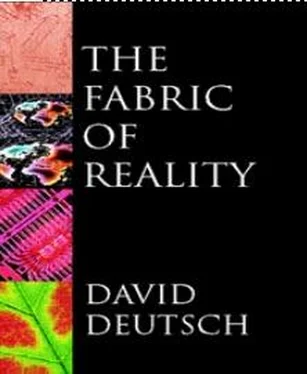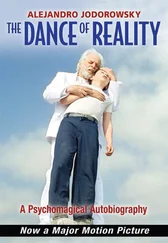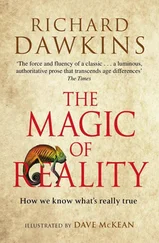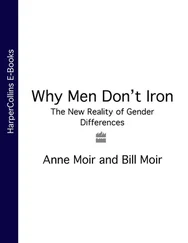David Deutch - The Fabric of Reality
Здесь есть возможность читать онлайн «David Deutch - The Fabric of Reality» весь текст электронной книги совершенно бесплатно (целиком полную версию без сокращений). В некоторых случаях можно слушать аудио, скачать через торрент в формате fb2 и присутствует краткое содержание. ISBN: , Жанр: Физика, Философия, на английском языке. Описание произведения, (предисловие) а так же отзывы посетителей доступны на портале библиотеки ЛибКат.
- Название:The Fabric of Reality
- Автор:
- Жанр:
- Год:неизвестен
- ISBN:0-7139-9061-9
- Рейтинг книги:4 / 5. Голосов: 2
-
Избранное:Добавить в избранное
- Отзывы:
-
Ваша оценка:
- 80
- 1
- 2
- 3
- 4
- 5
The Fabric of Reality: краткое содержание, описание и аннотация
Предлагаем к чтению аннотацию, описание, краткое содержание или предисловие (зависит от того, что написал сам автор книги «The Fabric of Reality»). Если вы не нашли необходимую информацию о книге — напишите в комментариях, мы постараемся отыскать её.
The Fabric of Reality — читать онлайн бесплатно полную книгу (весь текст) целиком
Ниже представлен текст книги, разбитый по страницам. Система сохранения места последней прочитанной страницы, позволяет с удобством читать онлайн бесплатно книгу «The Fabric of Reality», без необходимости каждый раз заново искать на чём Вы остановились. Поставьте закладку, и сможете в любой момент перейти на страницу, на которой закончили чтение.
Интервал:
Закладка:
CRYPTO-INDUCTIVIST: But how do we know that the Turing principle is true?
DAVID: We don’t, of course … But you are afraid, aren’t you, that if we can’t justify the Turing principle, then we shall once again have lost our justification for relying on scientific predictions?
CRYPTO-INDUCTIVIST: Er, yes.
DAVID: But we have now moved on to a completely different question! We are now discussing an apparent fact about physical reality, namely that it can make reliable predictions about itself. We are trying to explain that fact, to place it within the same framework as other facts we know. I suggested that there may be a certain law of physics involved. But if I were wrong about that, indeed even if we were entirely unable to explain this remarkable property of reality, that would not detract one jot from the justification of any scientific theory. For it would not make the explanations in such a theory one jot worse.
CRYPTO-INDUCTIVIST: Now my arguments are exhausted. Intellectually, I am convinced. Yet I must confess that I still feel what I can only describe as an ‘emotional doubt’.
DAVID: Perhaps it will help if I make one last comment, not about any of the specific arguments you have raised, but about a misconception that seems to underlie many of them. You know that it is a misconception; yet you may not yet have incorporated the ramifications of that into your world-view. Perhaps that is the source of your ‘emotional doubt’.
CRYPTO-INDUCTIVIST: Fire away.
DAVID: The misconception is about the very nature of argument and explanation. You seem to be assuming that arguments and explanations, such as those that justify acting on a particular theory, have the form of mathematical proofs, proceeding from assumptions to conclusions. You look for the ‘raw material’ (axioms) from which our conclusions (theorems) are derived. Now, there is indeed a logical structure of this type associated with every successful argument or explanation. But the process of argument does not begin with the ‘axioms’ and end with the ‘conclusion’. Rather, it starts in the middle, with a version that is riddled with inconsistencies, gaps, ambiguities and irrelevancies. All these faults are criticized. Attempts are made to replace faulty theories. The theories that are criticized and replaced usually include some of the ‘axioms’. That is why it is a mistake to assume that an argument begins with, or is justified by, the theories that eventually serve as its ‘axioms’. The argument ends — tentatively — when it seems to have shown that the associated explanation is satisfactory. The ‘axioms’ adopted are not ultimate, unchallengeable beliefs. They are tentative, explanatory theories.
CRYPTO-INDUCTIVIST: I see. Argument is not the same species of thing as deduction, or the non-existent induction. It is not based on anything or justified by anything. And it doesn’t have to be, because its purpose is to solve problems — to show that a given problem is solved by a given explanation.
DAVID: Welcome to the club.
CRYPTO-INDUCTIVIST: All these years I have felt so secure in my great Problem. I felt so superior both to the ancient inductivists, and to the upstart Popper. And all the time, without even knowing it, I was a crypto-inductivist myself! Inductivism is indeed a disease. It makes one blind.
DAVID: Don’t be too hard on yourself. You are cured now. If only your fellow-sufferers were as amenable to being cured by mere argument!
EX-INDUCTIVIST: But how could I have been so blind? To think that I once nominated Popper for the Derrida Prize for Ridiculous Pronouncements, while all the time he had solved the problem of induction! O mea culpa! God save us, for we have burned a saint! I feel so ashamed. I see no way out but to throw myself over this railing.
DAVID: Surely that is not called for. We Popperians believe in letting our theories die in our place. Just throw inductivism overboard instead.
EX-INDUCTIVIST: I will, I will!
crypto-inductivistSomeone who believes that the invalidity of inductive reasoning raises a serious philosophical problem, namely the problem of how to justify relying on scientific theories.
Next, the fourth strand, the theory of evolution, which answers the question ‘what is life? ’
8
The Significance of Life
From ancient times until about the nineteenth century, it was taken for granted that some special animating force or factor was required to make the matter in living organisms behave so noticeably differently from other matter. This would mean in effect that there were two types of matter in the universe: animate matter and inanimate matter, with fundamentally different physical properties. Consider a living organism such as a bear. A photograph of a bear resembles the living bear in some respects. So do other inanimate objects such as a dead bear, or even, in a very limited fashion, the Great Bear constellation. But only animate matter can chase you through the forest as you dodge round trees, and catch you and tear you apart. Inanimate things never do anything as purposeful as that — or so the ancients thought. They had, of course, never seen a guided missile.
To Aristotle and other ancient philosophers, the most conspicuous feature of animate matter was its ability to initiate motion. They thought that when inanimate matter, such as a rock, has come to rest, it never moves again unless something kicks it. But animate matter, such as a hibernating bear, can be at rest and then begin to move without being kicked. With the benefit of modern science we can easily pick holes in these generalizations, and the very idea of ‘initiating motion’ now seems misconceived: we know that the bear wakes up because of electrochemical processes in its body. These may be initiated by external ‘kicks’ such as rising temperature, or by an internal biological clock which uses slow chemical reactions to keep time. Chemical reactions are nothing more than the motion of atoms, so the bear never is entirely at rest. On the other hand a uranium nucleus, which is certainly not alive, may remain unchanged for billions of years and then, without any stimulus at all, suddenly and violently disintegrate. So the nominal content of Aristotle’s idea is worthless today. But he did get one important thing right which most modern thinkers have got wrong. In trying to associate life with a basic physical concept (albeit the wrong one, motion), he recognized that life is a fundamental phenomenon of nature.
A phenomenon is ‘fundamental’ if a sufficiently deep understanding of the world depends on understanding that phenomenon. Opinions differ, of course, about what aspects of the world are worth understanding, and consequently about what is deep or fundamental. Some would say that love is the most fundamental phenomenon in the world. Others believe that when one has learned certain sacred texts by heart, one understands everything that is worth understanding. The understanding that I am talking about is expressed in laws of physics, and in principles of logic and philosophy. A ‘deeper’ understanding is one that has more generality, incorporates more connections between superficially diverse truths, explains more with fewer unexplained assumptions. The most fundamental phenomena are implicated in the explanation of many other phenomena, but are themselves explained only by basic laws and principles.
Not all fundamental phenomena have large physical effects. Gravitation does, and is indeed a fundamental phenomenon. But the direct effects of quantum interference, such as the shadow patterns described in Chapter 2, are not large. It is quite hard even to detect them unambiguously. Nevertheless, we have seen that quantum interference is a fundamental phenomenon. Only by understanding it can we understand the basic fact about physical reality, namely the existence of parallel universes.
Читать дальшеИнтервал:
Закладка:
Похожие книги на «The Fabric of Reality»
Представляем Вашему вниманию похожие книги на «The Fabric of Reality» списком для выбора. Мы отобрали схожую по названию и смыслу литературу в надежде предоставить читателям больше вариантов отыскать новые, интересные, ещё непрочитанные произведения.
Обсуждение, отзывы о книге «The Fabric of Reality» и просто собственные мнения читателей. Оставьте ваши комментарии, напишите, что Вы думаете о произведении, его смысле или главных героях. Укажите что конкретно понравилось, а что нет, и почему Вы так считаете.












